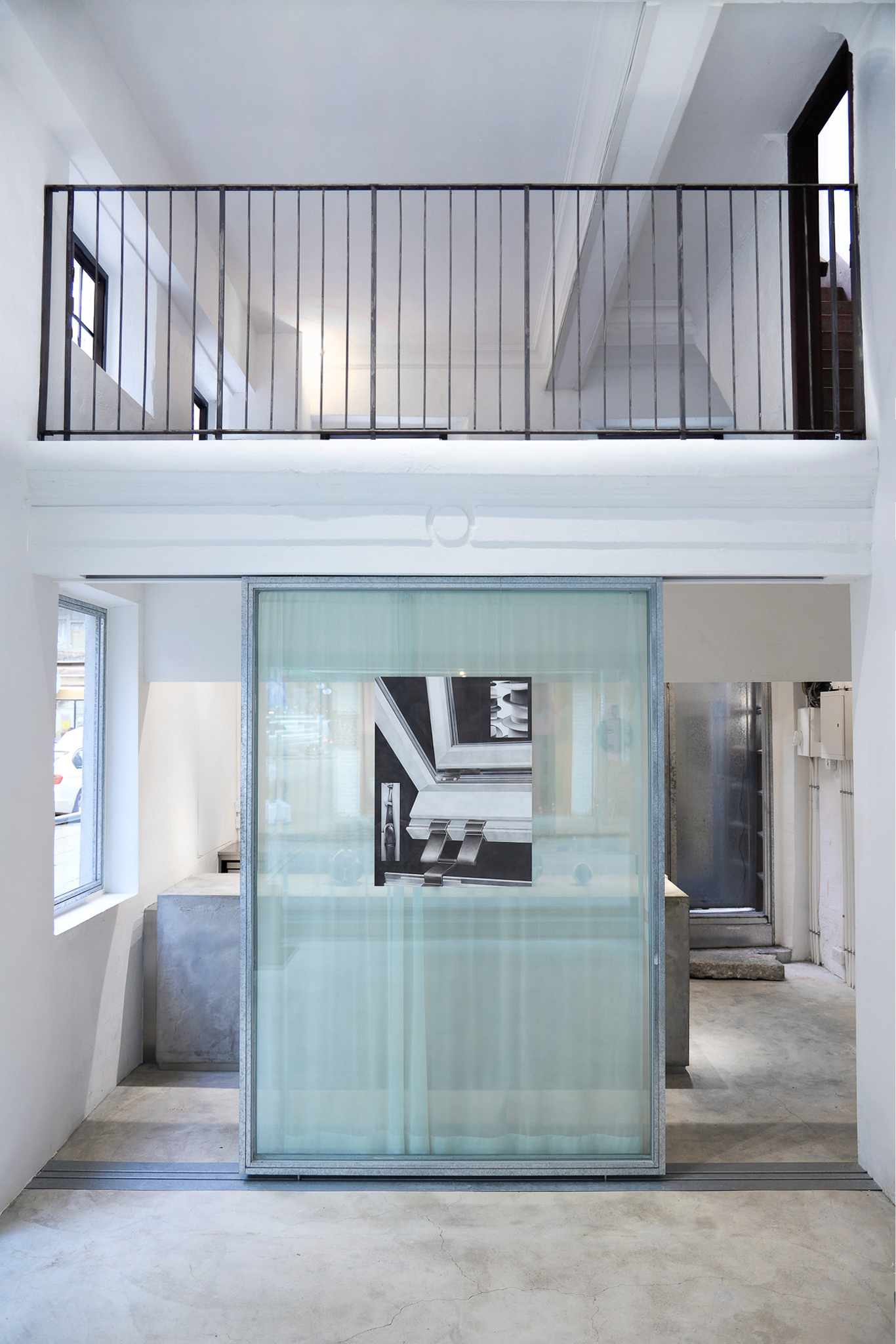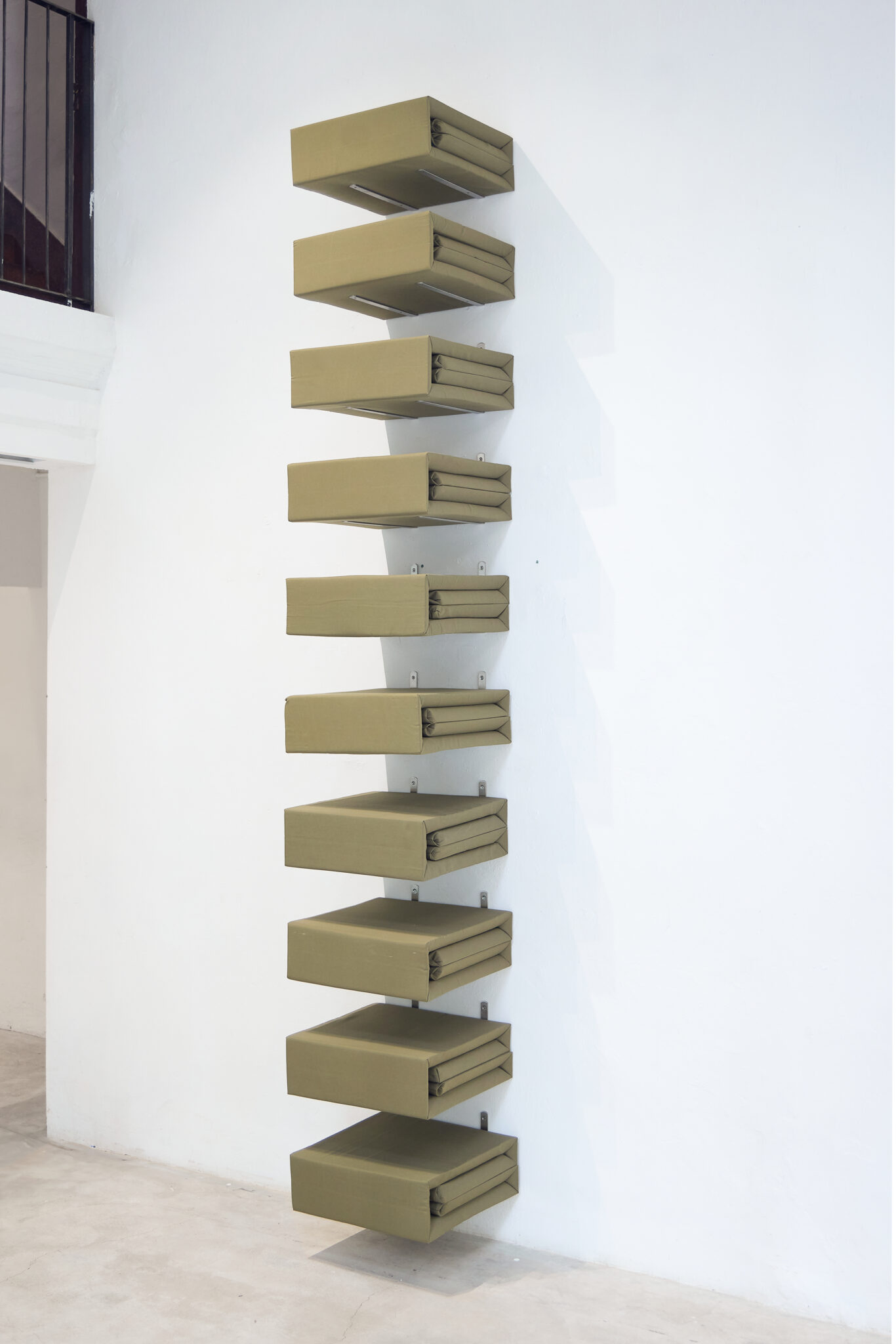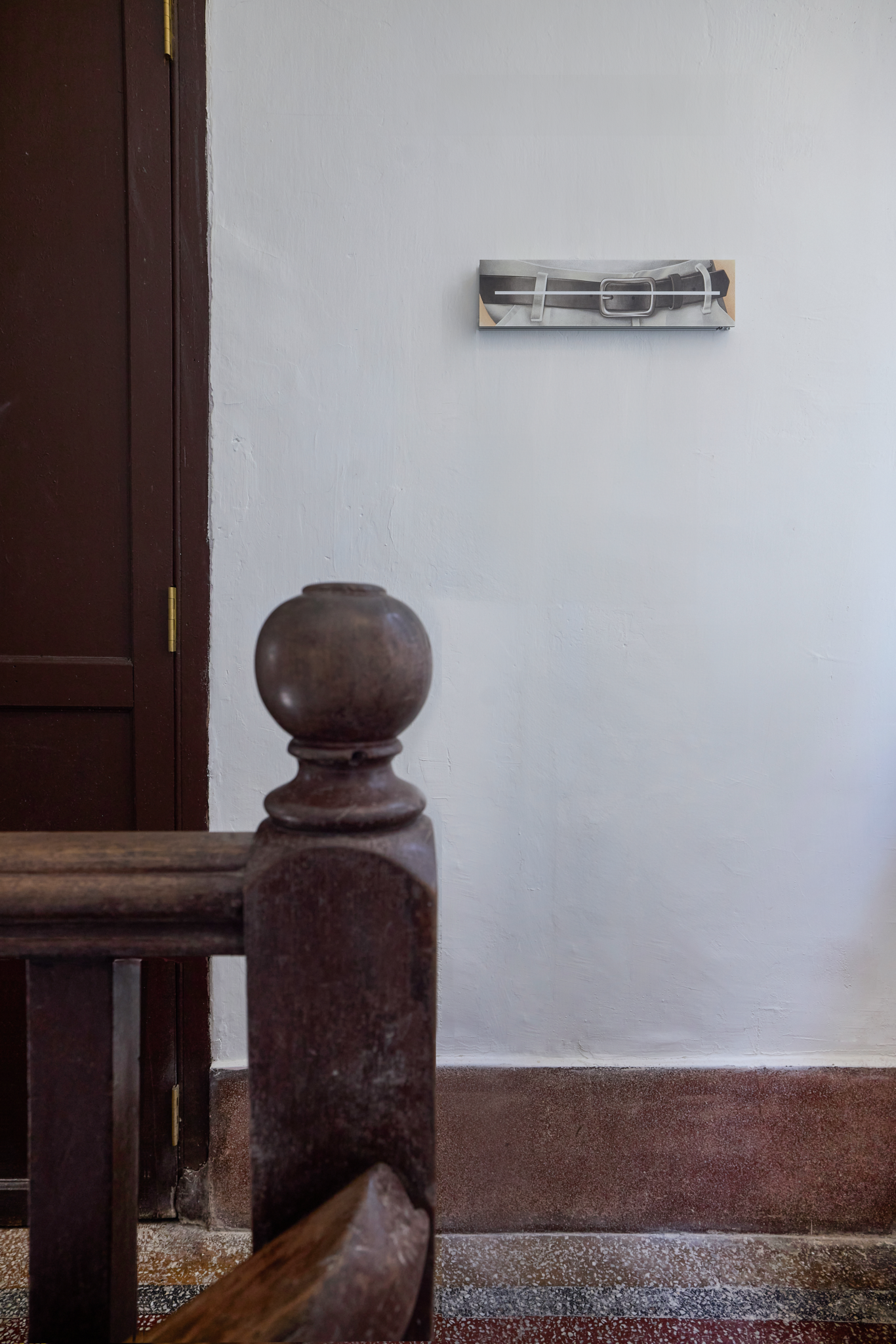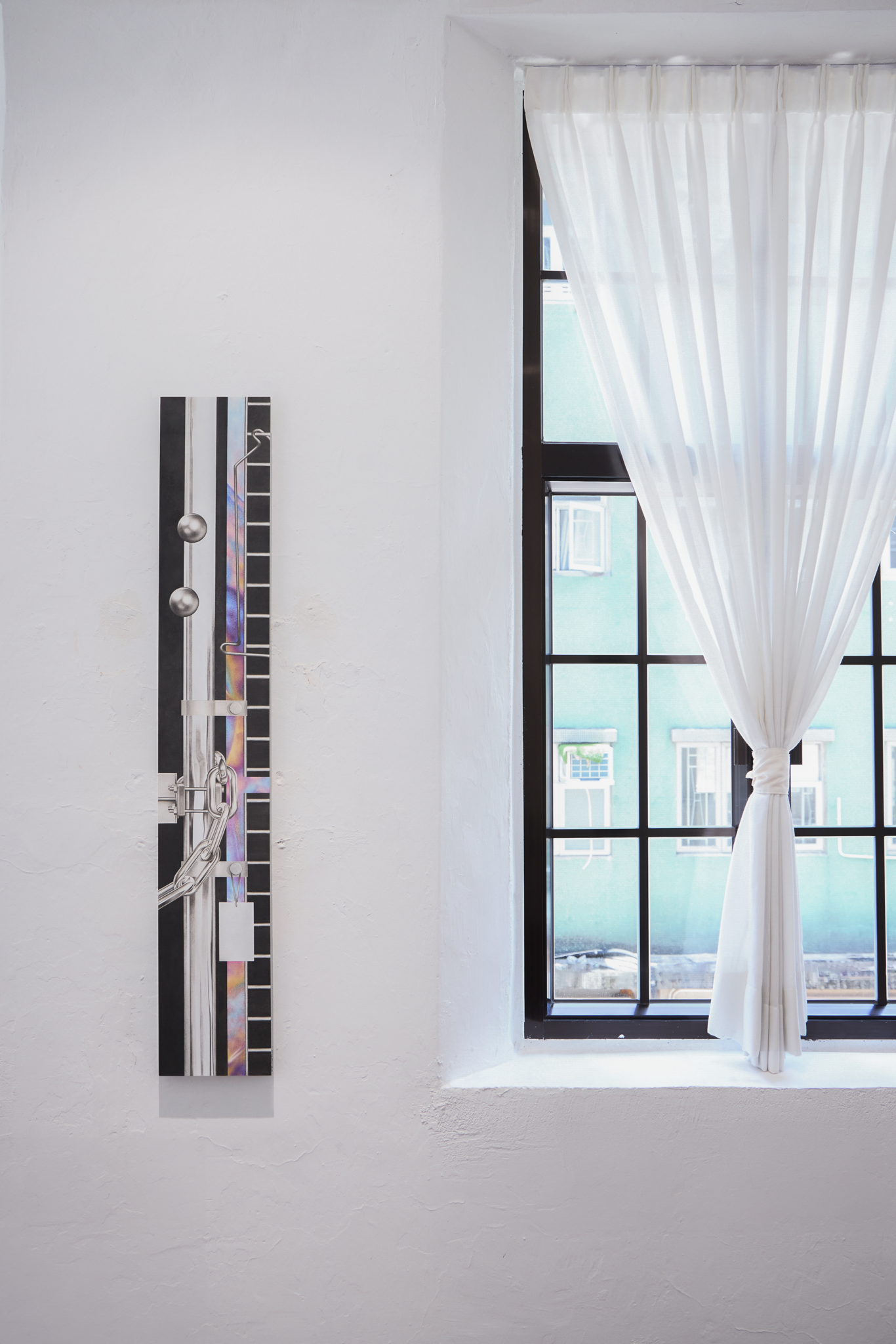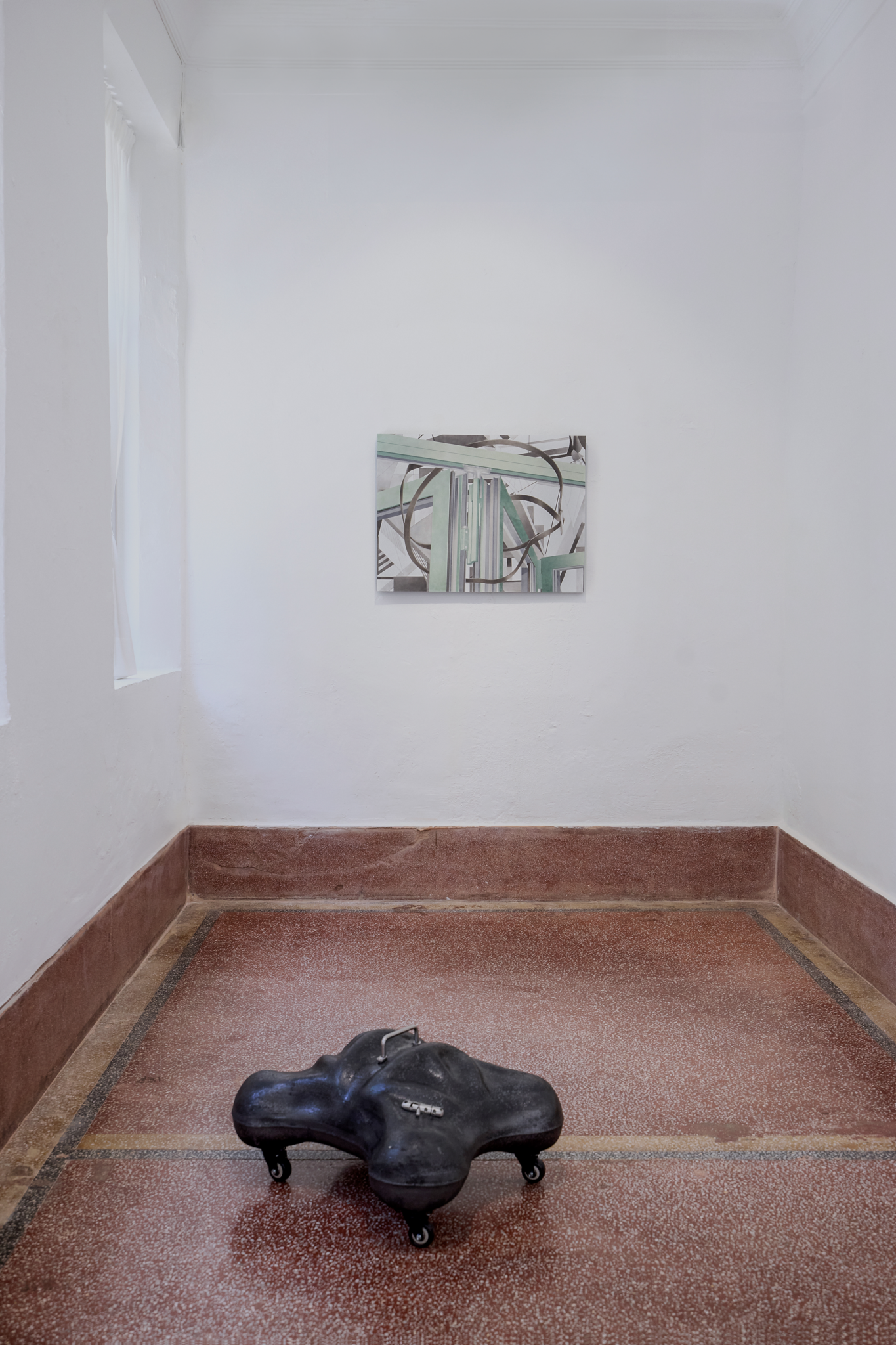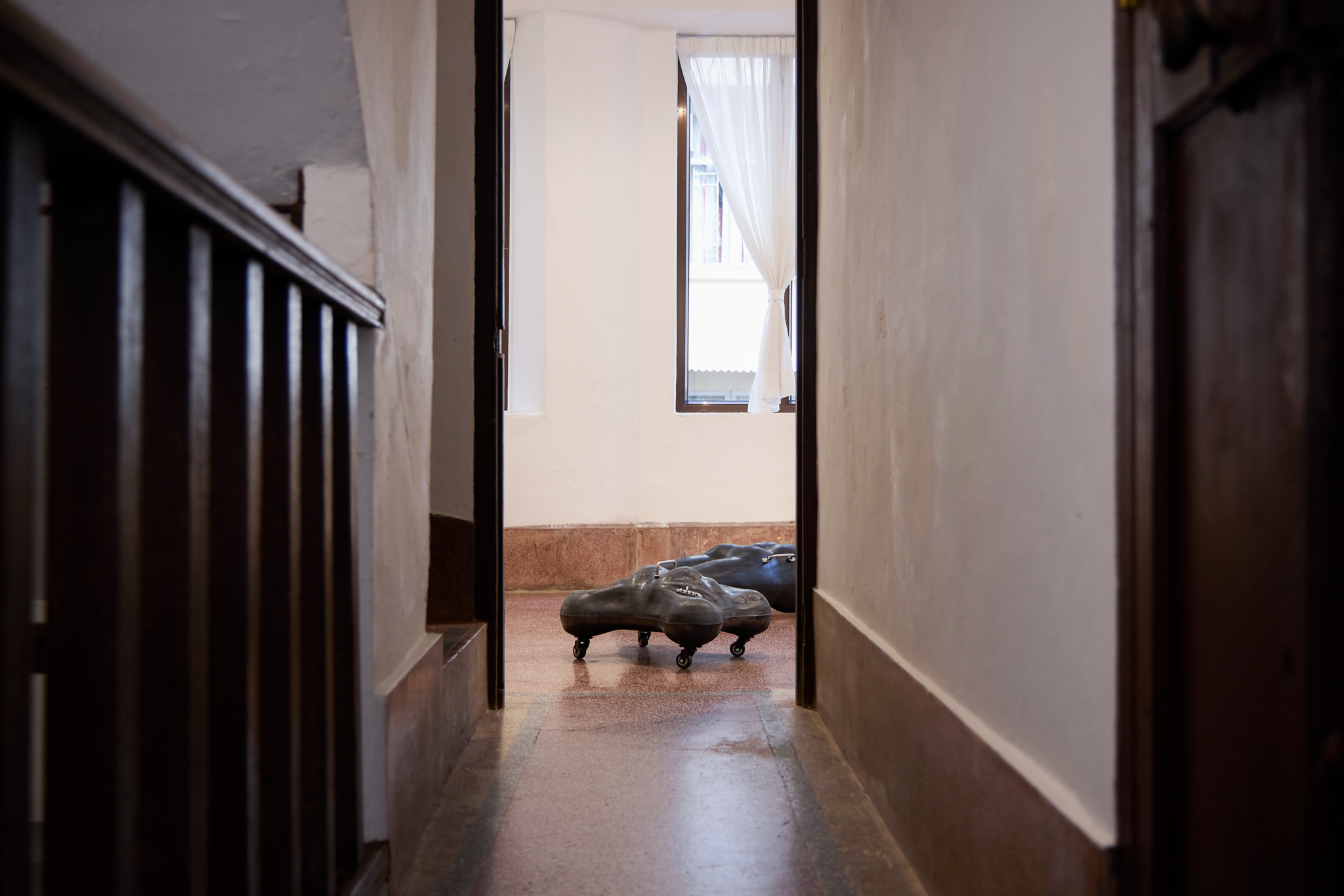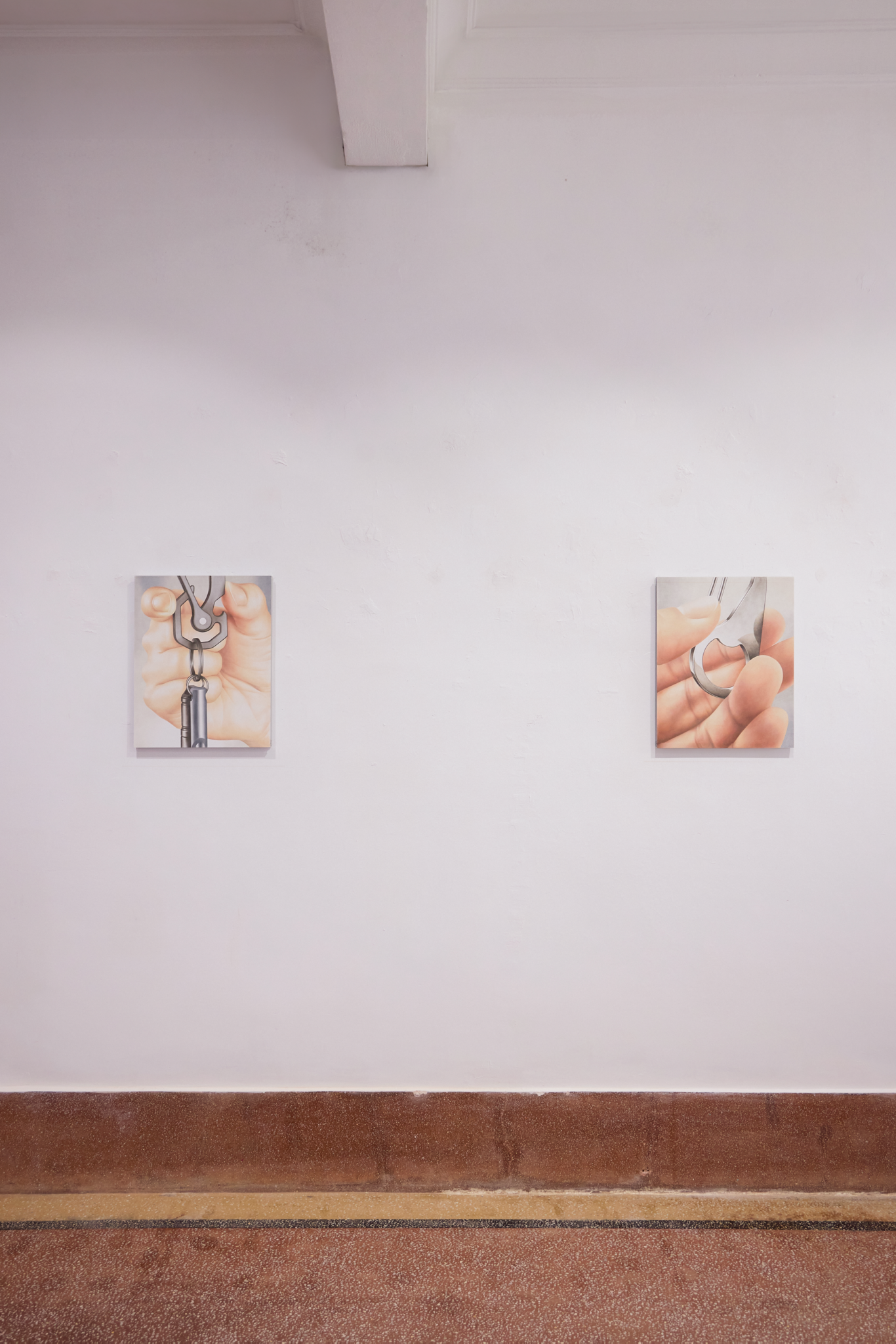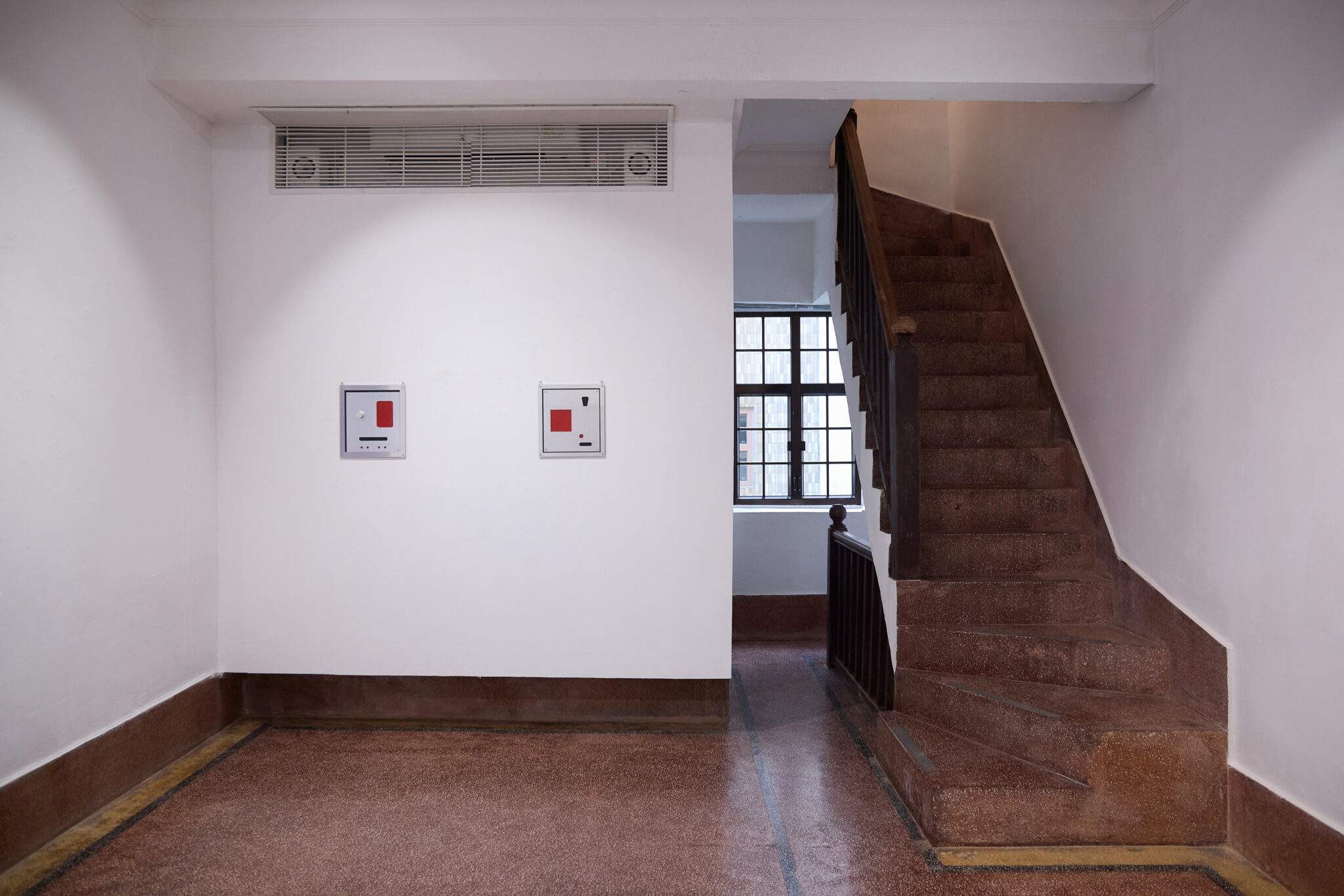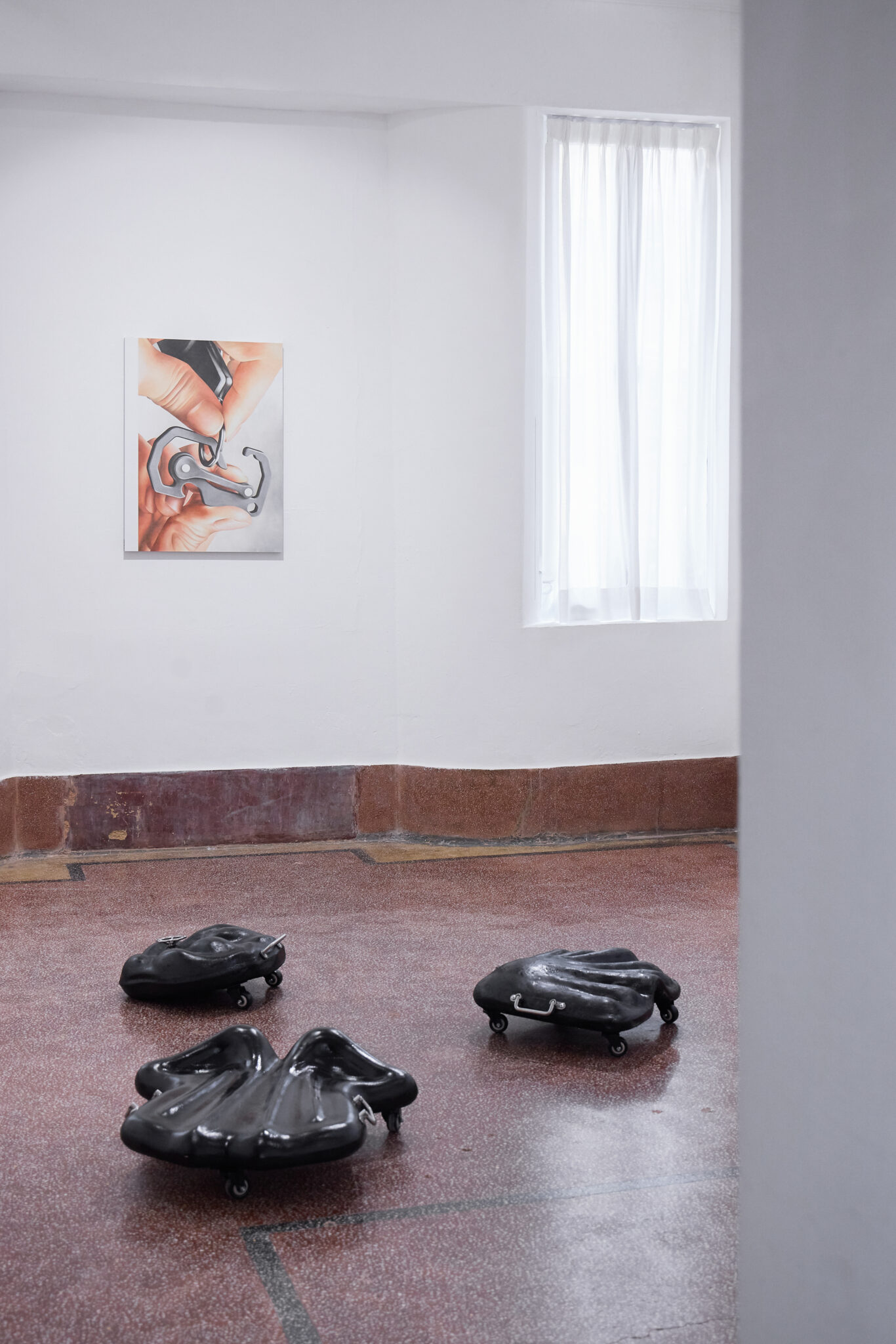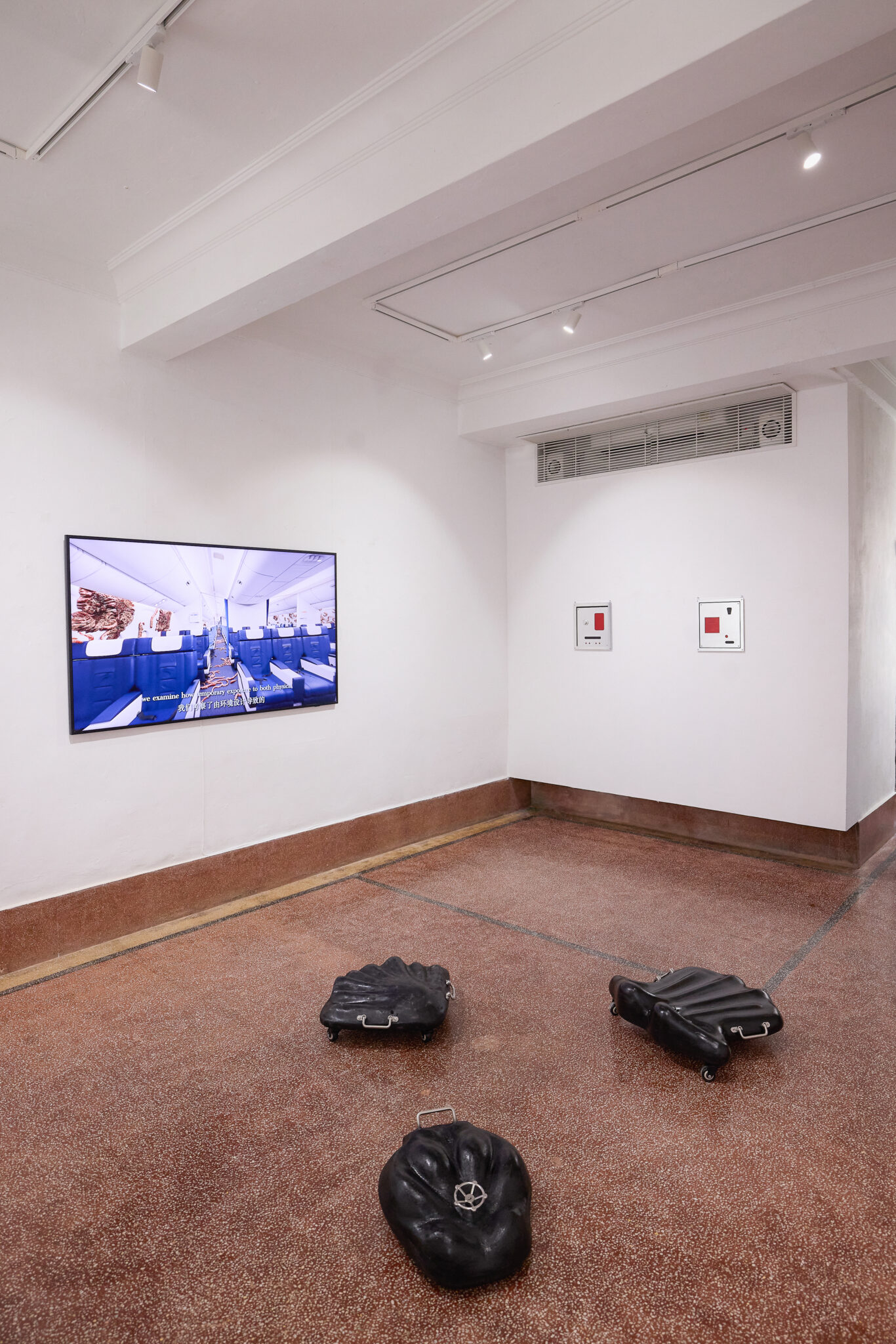Bad Physics
THE SHOPHOUSE is pleased to present Bad Physics, a duo exhibition by artists Sebastian Burger and Julian Junyuan Feng featuring a body of paintings, sculptures, mixed media and video artworks.
Founded on ideas of Dadaism and ‘pataphysics’, the exhibition contemplates the rules and rationality of common structures, ranging from everyday mechanisms to larger systemic ideologies. Interpreting the above via techniques of deconstruction as well as decontextualization, Bad Physics imagines alternative paradigms that contradict the preconceptions of logic and function.
Science is often equated with the notion of an absolute truth, and under this hypothetical, physics is the unequivocal way through which to understand the world. It teaches that objective observations are the mark of reality, yet as inherently emotional creatures, why must we abide by this doctrine? Leipzig-based artist Sebastian Burger sheds light on a repositioned perspective through his painted examinations of displaced quotidian objects. Under his brush, everyday subjects such as the composition of a window and the locking mechanism of a carabiner keychain are enhanced with heightened hints of fragility and tension. Inspecting beyond the reasonable surface, the artworks are quietly suggestive of the sexual or violent characteristics implicit in seemingly ordinary actions.
Shanghai-based artist Julian Junyuan Feng’s sculptures and mixed media works are ambiguous machines created to be non-functional or functional only in imaginary manners. His artworks resemble fictitious communication devices or experiments with illogical body parts, as if science developed exclusively on speculation. Feng’s mystic contraptions bring to mind the discredited theories of spiritual mediums or the works of a fictional mad scientist. Yet, reshaped into a methodical aesthetic, Feng’s artworks appear as if artefacts of an undetermined civilization.
Man-made environments are conceived under meticulous calculations to ensure maximum efficiency and order. Feng’s Air Rage (2023) is a video artwork that investigates the modern airplane as a microcosm of a class-based society. Bottled within an eerily realistic simulation, the video tours through an empty cabin invested with worm and flesh-like organisms. Beyond the frame, a narrator speaks calmly and collectively about the findings of a study. Though the conviction of science often offers reassurance in situations of uncertainty, the incongruous visual and auditory experience of Feng’s artwork questions whether the effect is of clarification or placation. Not unlike the peculiarities discerned by Burger in his paintings, the video alludes to science’s modification of the natural order via the conditioning of perception.
An inquiry of its own, Bad Physics explores the gray areas in-between the binary verdicts of logic. It posits that there are invisible dynamics hidden within the crevices of function, and realms that exist beyond conceivable reality. It asks, “How are we to comprehend the inconclusive?” and perhaps more importantly, “Must the answer be absolute?”
THE SHOPHOUSE欣然呈獻藝術家賽巴斯汀·伯格(Sebastian Burger)與馮駿原(Julian Junyuan Feng)的雙人展覽 「壞物理」(Bad Physics),展出一系列繪畫、雕塑、混合媒介及影像作品。展覽以達達主義(Dadaism)和後形而上學(pataphysics)為基礎,思考從日常機製到更大的系統性意識形態等常見結構的規則和合理性。「壞物理」通過解構和去語境化的手法對上述內容進行解讀,想象了與邏輯和功能背道而馳的替代模式。
科學往往被認為等同於絕對真理,而物理學在這種假設下成為了解世界的明確途徑。它告訴人們,客觀的觀察象征著現實,然而人作為天生感性的動物為什麽一定要遵守這一教義呢?來自萊比錫的藝術家賽巴斯汀·伯格通過對被移位的日常物品進行繪畫研究,揭示一種重新定位後的視角。在他的畫筆下,窗戶的構圖及鑰匙扣的鎖定裝置等日常事物都被強化了對於脆弱和緊張的暗示。透過看似合乎常理的表象,作品隱晦地暗示看似普通的行為中隱含的性或暴力特徵。
來自上海的藝術家馮駿原的雕塑與混合媒介作品為意味不明的機器——這些被創造出來的機器沒有功能,或者只能以想象的方式發揮作用。他的作品類似對於虛構的通訊設備或不合邏輯的身體部位的實驗,仿佛科學的發展完全依賴於推測。馮駿原的神秘裝置讓人聯想到已被廢棄的靈媒理論或虛構的瘋狂科學家的作品,它們被重塑為一種有條理的美學,仿佛是來自未知文明的工藝品。
現代世界對人造環境的構思都經過縝密的計算,以確保最高的效率與秩序。馮駿原的影像作品《空怒》(2023年)將現代飛機作為階級社會的縮影進行研究。作品的視角被裝入一個異常逼真的模擬裝置中,在空蕩蕩的機艙中巡回播放,機艙內布滿了蠕蟲和類似肉體的生物。在畫面之外,旁白平靜而集體性地講述著一項研究的結果。雖然對科學的確信往往能在不確定的情況下為人們提供保證,但馮駿原作品中不協調的視覺和聽覺體驗卻讓人懷疑其效果究竟是澄清還是安撫。與賽巴斯汀·伯格在其繪畫中發現的奇特之處異曲同工,這段影像暗指科學通過調節感知來改變自然秩序。
「壞物理」試圖探索的是二元邏輯判斷之間的灰色地帶。它認為,在功能的縫隙中隱藏著無形的動力,存在著超越可感知現實的領域。「我們該如何理解那些沒有定論的東西?」或許更重要的是,「答案必須是絕對的嗎?」


